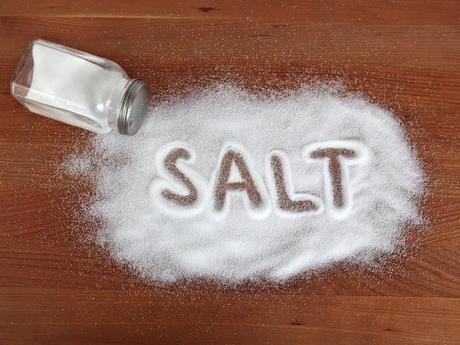
In the United Kingdom the average amount of salt consumed totals up to 9 grams of salt a day. This exceeds the recommended amount of salt set by the National Institute of Clinical Excellence (NICE) The recommended amount of salt that should be consumed should not exceed 6 grams a day. This is equivalent to a teaspoon. There are three major factors that are influenced by the excess consumption of salt. These are:
Blood pressure
Kidneys
Stroke
Osteoporosis
Blood pressure
Blood pressure measures the force that blood pushes and moves against blood vessels. This is important so that the body has a sufficient supply of oxygen and energy needed for life. For this to be effective the blood pressure has to be as normal as possible. Eating too much salt causes a raise in blood pressure, because the excess salt causes a strain to the arteries trying to pump the blood through the arteries to the major organs. This constant strain on the arteries can lead to them becoming busted, or becoming clogged up. This can eventually lead to the organs becoming damaged, which could be fatal for the body.
Kidneys
The kidneys are a major organ in our bodies flushing out unwanted fluid through urine, when we go to the toilet. This process is done by extracting the fluid from our blood. Eating excess salt causes the amount of salt to stay in the blood stream. This can make life difficult for the kidneys to remove the salt from the blood stream. This can cause a strain on the kidneys, causing the body to retain the extra fluid. This can eventually lead to kidney damage,
Stroke
A raised blood pressure could also cause a problem for the brain as well, due to the possible lack of oxygen passing from the arteries leading to the brain. This could lead to stroke, resulting in possible dementia. This is due to the arteries becoming damaged, or busted due to the lack of oxygen going to the brain.
Osteoporosis
The Kidneys also support the body by helping to ensure enough Vitamin D absorbs calcium. This is important as calcium and vitamin D produce strong bones and teeth in the body. However salt can affect this, by salt being absorbed in the urine, this can weaken the bones, which can lead to osteoporosis.
The above are the reasons why we should try to reduce the amount of salt that we consume on a daily basis. At least 75% of food sold contains salt, therefore when we add salt in food, especially during cooking, we are adding to this value. This is the reason why it is important to look at food labels, so that we can choose lower salt options i.e. a typical product containing, at least 3 grams of salt per 100 grams or more is usually high in salt. Aim for items lower than this value. There are two types of labels in the UK, traffic lights and Guideline Daily Amounts (GDA)
Traffic lights uses the color coding system, similar to the traffic lights when driving. Red meaning high in that item, therefore avoid if possible, amber meaning moderate amount of that nutrient (so salt in this instance) and green meaning low in that item. Aim for mostly greens or ambers if a traffic light label is displayed. For GDA labels, they are displayed in percentages, therefore aim for no more than 40% for the salt content for each food product consumed. There are also other ways to reduce the salt content, by following the examples below:
· Try not to add salt during cooking, try to use herbs and spices instead.
· Avoid adding salt to the meal at the table
· Try to swap takeaways high in salt for homemade versions; they are usually lower in salt, tastier and more cost effective.
· Opt for fruit and vegetables rather than salty snacks i.e. plain nuts, plain popcorn, rye, crisp bread.
Bio: I'm Francesca Uhegbu, I am a qualified nutritionist for the past 5 years, supporting people with all aspects of healthy eating, including weight loss.
My website is www.livelongrocks.co.uk or my blog on www.livelongrocks.blogspot.com
